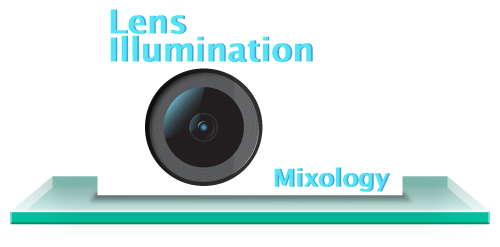 How does Lens Illumination work?
How does Lens Illumination work?
Lens Illumination involves developing written passages (or visual creative work) by constructing a series of varying viewpoints of a situation or incident in the way that the alternate camera angles are used to develop a film.
The ‘illumination’ of lens illumination is analogous to film lighting, where different position, strength and nature of lighting will emphasise selected details.
The view through the lens is framed by asking a series of questions that pick out the essential elements the lens is recorded.
The answers to these questions provide the illumination of relevant details that it is essential the reader or viewer perceives - or is made aware of - for the integrity of the creative work to be maintained and the sense to move forward.
 Illustration: Lens Illumination
Illustration: Lens Illumination
The following illustrates how the Lens Illumination technique has been used in the construction of The Tailor.
The questions that make up the chosen view through the creative lens:
- In what way might (IWWM) failure create the change needed to forge success?
- What (Other Question Formats) actions does Anjali initiate to trigger the change?
- How does ‘fashion resulting from progressive alteration’ prove to have potential?
- What motivates the character Eileen to contact ‘Threads’?
The answers that define the plot and text development the ‘illumination’ questions are attempting to envision:
- By starting the process of stepping outside of the understandings that define the ‘Threads’ business – which will eventually lead to conflict with Panja.
- A series of workshops addressing clothing design.
- The discovery of a weaving mill where Anjali’s design capabilities would be valued.
- The need to improve the credibility of the current mill’s management.
The text passages derived from this illustration of the Lens Illumination technique:
- With her dream of ‘fashion design by successive alteration’ now at risk, Anjali gave herself permission to do those things that only become conceivable when one is facing failure.
- It was in her ‘Geometric Form and Perspective in Dress’ workshop in the town hall annex that Anjali met Eileen, mother of three at home and personal assistant to the Factory Manager at work.
- ‘I work in one of the last weaving mills in Wetledale,’ Eileen related over the fashionable Duchy biscuits which Panya had described as “certainly conducive”. ‘We are wool weavers, mixing local and imported wool.’
- The red-headed lady is dressed for the part she is auditioning for. She looks in control. The colour is confidence and capability. The cut is planning and precision of decision. You know that she can take people with her, because you are taken with her.
